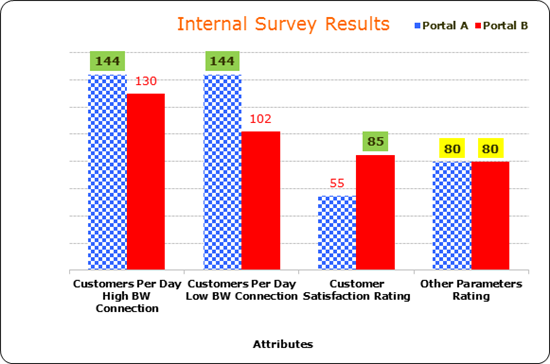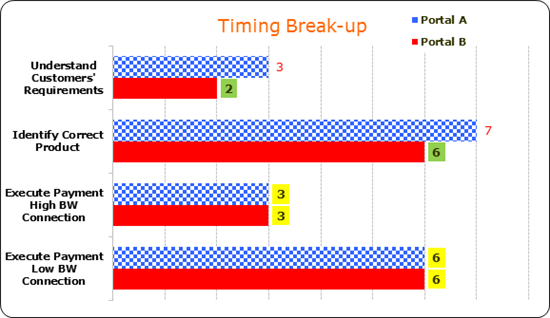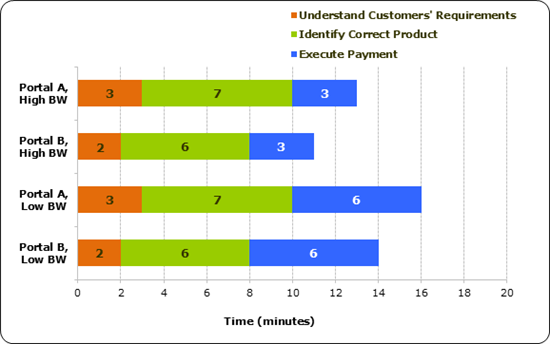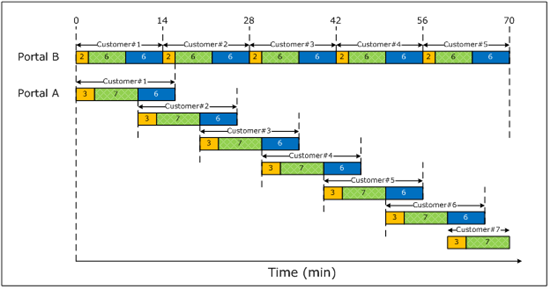This is the second post in our SAR ADC series.
Part 2: A marketing analogy
When a response time of 1 µs is required from the SAR ADC (tRESP-ADC = 1 µs), many engineers would search for a SAR ADC with throughput of 1 Msps (tTHROUGHPUT = 1 us). In reality, the two parameters are actually different. To demonstrate the difference, let’s look at the following analogy:
You are the marketing manager of a major retail company. The company plans to launch a new e-tailing business in order to maximize its customer base. To start,you identify 3 essential steps in the e-tailing process:
- Understand customers’ requirements
- Identify the correct product
- Execute payment through a secured, external, payment gateway
You supervise two teams, Team A and Team B, to design the e-tailing portal. To maintain high quality of service and to maximize profits, you set up following goals for both teams:
- Maximize number of customers addressed per day
- Achieve score of >80 on customer satisfaction rating
Once both teams are ready, you release a ‘Beta’ version from each and launch a survey. The survey results are shown below:
The results show that:
- For users with a high bandwidth connection, Portal A can address ~10% more customers per day. Even for customers with a low bandwidth connection, Portal A is still able to address same number of customers per day – a whopping ~20% more than what Portal B could achieve.
- For all ‘Other Parameters’, both the portals have similar ratings.
Portal A is the clear winner on ‘throughput’ – i.e. on maximizing number of customers addressed per day.
However, rather surprisingly, the better portal (Portal A) also has a poorer customer satisfaction rating! As any clever manager would, you dig deeper into the time taken by each portal for several key steps in the process:
Moreover, what you discover is that these two charts provide a completely new story:
- By improving the questionnaire given to customers, Portal B took less time to ‘Understand Customers’ Requirements..
- By improving the search algorithms, Portal B was took less time to ‘Identify the Correct Product.’
- Both Portals took equal time on the External Payment Gateway to ‘Execute Payment.
In summary, the customer satisfaction ratings are inversely proportional to the ‘response time’ of the portal – i.e. the more the time customers have to spend on the portal, the lower the ratings.
No wonder customers gave higher rating to Portal B!
That brings us to the real question:
If Portal A was taking more time to address each customer, how was it able to address more customers per day than Portal B? In other words, if Portal B had a better ‘response time’ than Portal A, how could Portal A achieve higher ‘throughput’ than Portal B??
On closer inspection, you figure out that both portals are executing the first two steps ‘in-house’ and then connecting the user to an ‘External Payment Gateway.’ In summary, you have discovered that the trick is in the effective utilization of time spent at the ‘External Payment Gateway.’
Therefore, after completing the first two steps and connecting the customer to the ‘External Payment Gateway,’ Portal B sat idle – waiting for the payment transaction to complete.
Portal A, however, had figured out that it need not stay idle during this time!
Portal A was able to ‘Understand (next) Customers’ Requirements’ even as the external payment gateway was ‘Executing Payment” (for previous customers).
By implementing this ‘parallel processing’ technique, Portal A completely eliminated the ‘Execute Payment’ step from their ‘throughput’ calculations. This method also allowed Portal A to address the same number of customers irrespective of the connection bandwidth.
However, this increase in throughput did not improve the response time of the portal, thus explaining the poorer customer satisfaction ratings.
Coming back to SAR ADCs, a typical SAR ADC goes through three states:
- ‘Sample’ the Analog Input
- Convert the ‘sampled Analog Input’ to ‘equivalent Digital Code’
- ‘Transfer’ the digital output code to the host controller
Do you see the similarities now?
Stay tuned – in the next blog post we will learn how SAR ADCs can achieve higher throughputs without actually improving the response time.




